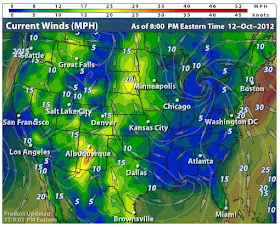Since I normally don't bird on Sunday, I haven't done a real
Big Sit since the mid-1990s in Texas. This year, with the decision to open up the event to Saturday sitters, I jumped back in with a Big Sit from my back patio here at home.
 |
| Big Sit view from the patio |
Actually, I got a slow start, so I kind of just eased into it. I meant to get up early and listen to the nocturnal migration, but I was just too tired. I did decide to do a machine assisted
Big Sit--and count the night flight calls (NFCs) of birds that I was able to detect with my
OldBird 21c microphone. So first thing I did was check my recording in the morning (see
nightly summary here), to start out the Machine Assisted Big Sit with:
1)
Swainson's Thrush--NFC
2)
Gray-cheeked Thrush--NFC
3)
Hermit Thrush--NFC,
FOS
4)
White-throated Sparrow--NFC
5)
Savannah Sparrow--NFC
6)
Indigo Bunting--NFC
7)
Common Yellowthroat--NFC
8)
White-crowned Sparrow--NFC (new yard bird)
9)
Northern Parula--NFC
10) Song Sparrow--NFC
11) "
Zeep call"--NFC, probably
Blackpoll Warbler
12)
Palm Warbler
In the morning, I thought I would only sit for a few hours and call it good, but I forgot how much fun it is sitting there and watching birds go by! See the
eBird report here. In the AM I added:
13)
Pine Siskin--over 20 birds at my feeder most of the day
14)
Purple Finch--over 10 at my feeder most of the day
15)
American Goldfinch
16)
Downy Woodpecker
17)
Canada Goose
18)
White-breasted Nuthatch
19)
Tufted Titmouse
20)
Dark-eyed Junco--FOS
21)
American Crow
22)
Blue Jay
23)
American Robin
24)
Northern Cardinal
25)
Black-capped Chickadee
26)
Chipping Sparrow
27)
Red-breasted Nuthatch
28)
Red-bellied Woodpecker
29)
House Finch
30)
Black-throated Blue Warbler--male and female together
31)
Carolina Wren
32)
Sharp-shinned Hawk (quick bird through the trees)
33)
Mourning Dove
34)
Northern Flicker
35)
Red-tailed Hawk
36)
Brown-headed Cowbird (flock flyby)
37)
Turkey Vulture
38)
Golden-crowned Kinglet
39)
Yellow-breasted Chat--new yard bird, 2012 county bird--locally rare highlight of the day at 10:35am
40)
House Sparrow
The chat was awesome! I had looked for chats in the spring and they are always on my mind when I am birding brushy hedgerows in the fall, but we are on the edge of their range and they are rare here. As I was sitting and watching, I saw a yellow catbird-sized bird fly up from the multiflora rose and grapes on the edge of my woods. I quickly got on it and saw the black lores and white spectacles. I watched it for a few seconds before it slipped back into the brush. I ran and got my camera, but it was moving quickly through the brush in the woods and I never got a shot of it.
Well, at this point I pretty much decided I would be watching in my yard all day and do a full Big Sit! In the afternoon, things are usually slower, and the landscapers were putting in a walkway in the back, so I watched from an upstairs window over the patio (see
eBird report here), adding:
41)
Black Vulture--2:00pm after a long watch with no new birds
42)
Northern Harrier--new yard bird, a migrant soaring with vultures at 2:20pm
43)
Cooper's Hawk
44)
Yellow-bellied Sapsucker--3:30pm
45)
European Starling--4:00pm
46)
Yellow-rumped Warbler
At 5:15pm I had to go to a party at church, so I missed the last hour of the day. After I got home in the evening, I wanted to finish up right, so I got out my iPod and called up:
47)
Eastern Screech-Owl
The OldBird21c microphone manned the station again from 8pm-midnight, but the autodetectors didn't pick up anything that would be new for the day--though perhaps on further review of the tape there might be a goody or two in there that the detectors missed.
So, not bad--47 species, including 10 only recorded by the microphone (I got White-throated Sparrow and Palm Warbler myself later during the sit). While I could have seen more birds at Spruce Run, or one of my other local patches, I liked the personal feel of doing the sit in my yard--and it payed off with some new yard birds and a county year bird. But more than anything, it was a way for me to connect with my yard and bird neighbors. Next year I'll get my kids more involved, and maybe have some friends over as well for a Big Sit party!

















